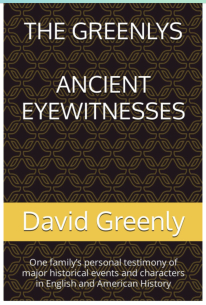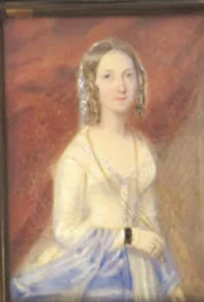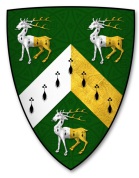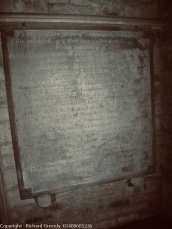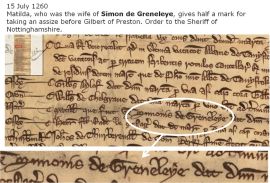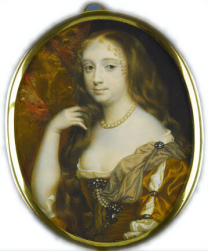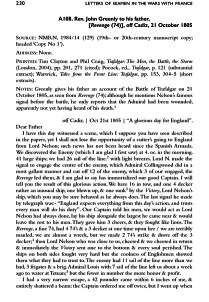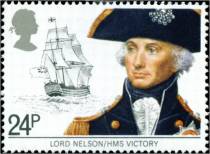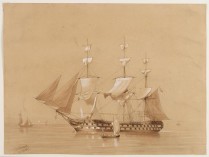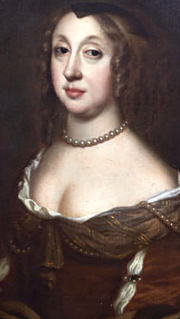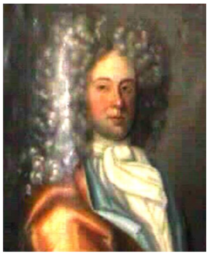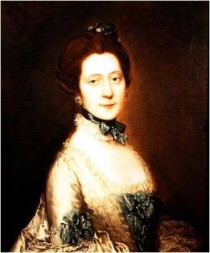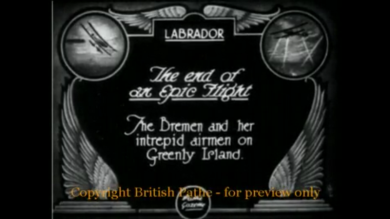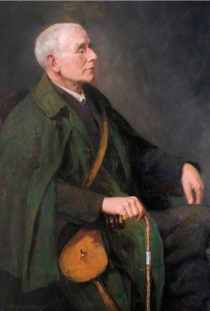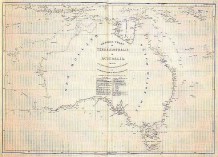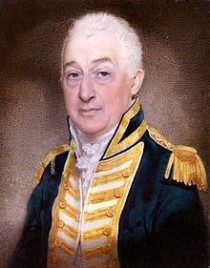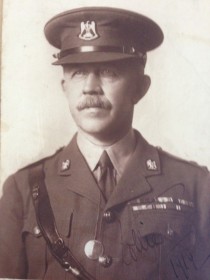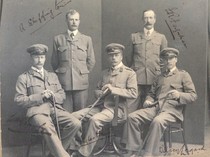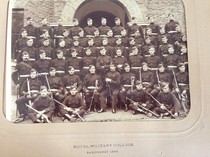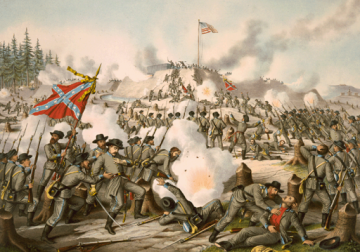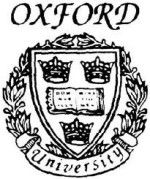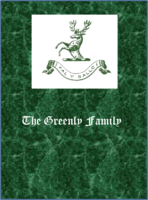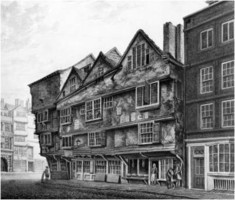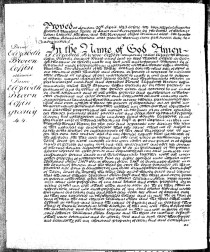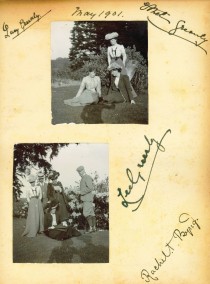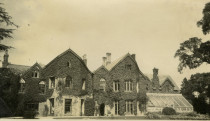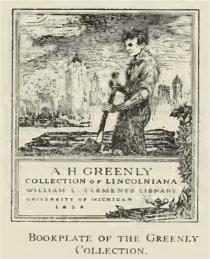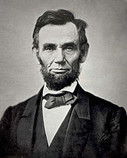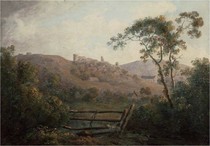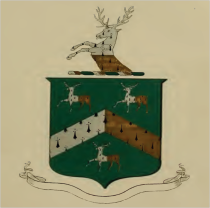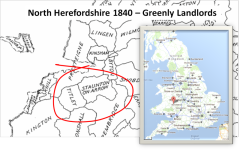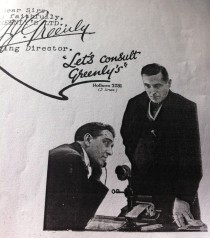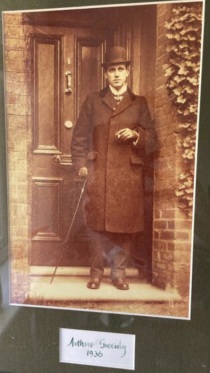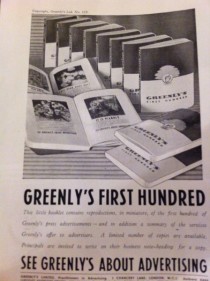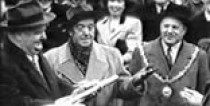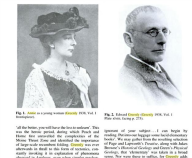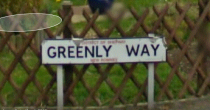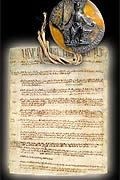Records from the Kings Fine Rolls we see that Greneleye's are commited to provide soldiers in 1373 and again in 1428.
The Nature of the fine rolls
The fine rolls are the earliest surviving rolls compiled by the English royal chancery. Surviving in almost continuous sequence from 1199, they are preserved in The National Archives at Kew, one for each regnal year. For Henry III’s reign (1216–1272), there are fifty-six rolls, written in Latin on parchment, with each roll being composed of separate membranes sewn together, the membranes measuring roughly 50 cm in length and 35 cm in width.
Since Henry’s regnal year began on 28 October, each roll runs from 28 October in one calendar year to 27 October in the next. Over the course of the reign the rolls expanded greatly in length, many having a dozen or more membranes and containing over 30,000 words. They are a vital resource for the history of England in the period between the establishment of Magna Carta early in Henry’s reign and the parliamentary state which was emerging at its end.
A fine was essentially a promise of money to the king in return for a concession or favour, and the first purpose of the fine rolls was to record the money so offered. They are essential for the study of royal patronage, the relations between the monarch and his subjects, and structures of families and their histories. Barons and knights gave money to succeed to their inheritances on the death of their immediate ancestors. Money was offered by magnates and ministers for the right to marry heiresses and widows, and, conversely, by widows to control the lands and marriages of their children, and to be allowed themselves to stay single or marry whom they wished.
The rolls are equally significant in other areas. They record the purchase of an ever growing number of writs, from wide sections of society, to initiate and prosecute law cases, and are thus central to the study of the early common law. They have numerous fines for permission to set up new markets and fairs, thus revealing the rapid commercialization of England. And, resonating from top to bottom of society, they throw light on the rising standard of living of the nobility, the changing structure of the gentry and the growing aspirations of peasant communities, for they contain fines from nobles to be allowed to construct private parks for hunting, from members of the gentry to be exempted from knighthood, and from peasant communities to secure protection from their lords.
During the course of the reign, the rolls came to include a large amount of new material unrelated to fines, including rates of debt repayment (by which the king could either punish or placate), and the seizure of lands into the king’s hands in times of political crisis, so making the rolls are a key source for the 1258-1267 Montfortian period of reform and rebellion.
The rolls have likewise information about taxation levied on towns and royal manors (hence their value for local historians) and also taxation levied on the Jews, taxation which destroyed their wealth and prepared the way for their expulsion from England in 1290. The changing nature of royal revenue revealed by the fine rolls is absolutely key to understanding the impact of Magna Carta and the development of the parliamentary state.
http://www.finerollshenry3.org.uk/index.html
William de Greneleye 1373
This de Greneleye promised to provide soldiers to fight under the Earl of Warwick in France.
|
First Name |
De |
Surname |
Status |
Rank |
Captain Name |
Sub-Captain |
Commander |
Type |
Date |
Duration |
Location |
|
William |
Greneleye |
Warwick, Thomas de Beauchamp, earl of |
Protection |
1373 |
1 year |
France (overseas) |
The Garrison database contains over 110,000 service records. The records are drawn from mainly French repositories and record service for the English crown, in the occupation of Normandy from 1415 - 1453.
John Greneley 1428 - fights the French
|
John |
Greneley |
Archer mounted |
Minors, William |
Garrison |
Harfleur |
1428 08 04 |
